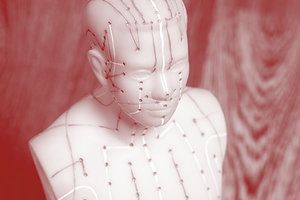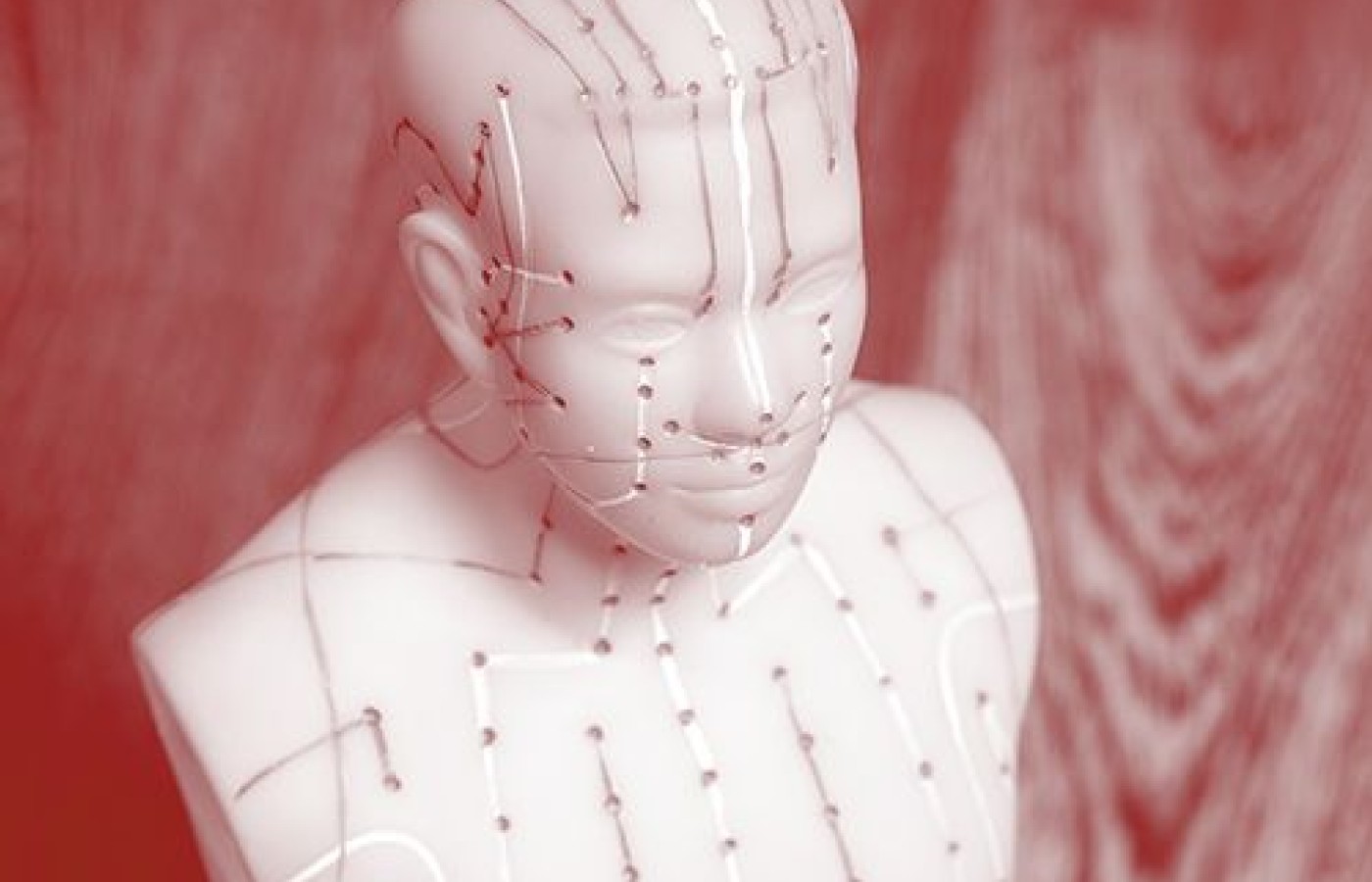One of the longest nerves in the body is known as the vagus nerve (VN). The VN is the 10th pair of cranial nerves that originates at the brain stem in the medulla oblongata. This nerve is part of the parasympathetic nervous system, which is a part of the ANS. Research suggests ear acupuncture can activate the VN.
Points & Pathways: Unifying the Great Disconnect
The Han dynasty classic the Ling Shu is a foundation Chinese medical text. In chapter 10, The Main Channels, the pathways of the channels are presented. Every professional acupuncture book includes the pathways; this tradition has lasted 2,000 years. One might ask why would the ancient and modern teachers present the pathways of the channels if they are not involved in the way acupuncture works? Addressing this question is essential in understanding how acupuncture works and shifting from a common misunderstanding in clinical practice.
The Great Disconnect
Acupuncture texts include the acupuncture pathways before presenting the acupuncture points. Based on that presentation it would be logical to conclude the way acupuncture works is through the pathways. Reinforcing and reducing are the techniques used to stimulate points to create a reaction through the channel to achieve the clinical goal.
The unity of channels and points is alluded to in the classics and modern books, but the reality is that the two are one is not explained. Common teachings are based on the ability of each point to treat a long list of conditions without any explanation for how acupuncture works. This disconnect: that acupuncture is a point driven system, separates point(s) and channels, and can lead to less effective clinical results. In my opinion, it is the main reason some practitioners pursue other traditions of acupuncture.
A Development in Chinese Medicine
The channels that herbs enter were not always known. In older texts herbs would be presented with the conditions treated. In the Shen Nong Ben Cao tradition, the Divine Farmers Almanac, written by Tao Hongjing in the 5th century CE, was a summary of the Chinese herbal knowledge up to that time.
In this book there are no channels assigned to herbs. For almost 1,000 years channels were not assigned to herbs. Zhang Yuansu wrote Pouch of Pearls in the 12th century CE. In this book he begins to assign channels to herbs; it is that connection which would contribute to the reason for their actions.
This wasn't immediately accepted. Li Shizhen didn't include the channels herbs entered in his classic herbal book, The Grand Materia Medica, completed in 1578 CE. Eventually, the channels herbs enter, herbal combinations, common patterns, syndromes and a deeper understanding of human anatomy, physiology, and pharmacology were included in herbal medicine.
Herbal medicine has developed into a sophisticated medicine rooted in Chinese medical theory and in several ways supported with western science. The relationship between acupuncture points, channels and areas of the body has not developed in a similar way.

Understanding how acupuncture works requires recognizing points are part of channels, and treatments are most effective when points or areas on the same channel are combined to stimulate the channel to achieve the clinical goal. Channels flow throughout the body and enter organs. That reality parallels how herbs enter channels, organs and areas. In the practice of acupuncture, the central objective should be how does the practitioner stimulate the channel to influence the targeted area in the same way herbalists select herbs that enter channels and areas of the body.
Selecting local points is like selecting guiding herbs, for example, treating bladder 23, Shenshu to direct qi into the kidneys or Ren 12, Zhongwan to direct qi into the stomach. They can be viewed as destination points/areas. Selecting distal points on the channel can increase the movement of qi that can be directed to a targeted area.
For instance, needling Spleen 3, Taibai, which is a source point and Spleen 9, Yinlingquan, which is a sea point can stimulate the spleen channel and the qi inside the channel. If only those points are treated, the hope is the qi in the spleen channel will move through the channel and fill the spleen organ and strengthen it.
Adding Liver 13, Zhangmen, which is the mu point of the spleen acts as a guiding point into the spleen. It is the location qi is sent after stimulating spleen 3 and spleen 9. It is a direct way to send the qi exactly where you want to send it. Sending qi exactly where you want to is the goal when reinforcing an organ.
I often ask students and interns when you needle kidney 3, Taixi, to tonify the kidneys, what is happening inside the body. They are usually puzzled. When asked when you prescribe Liu Wei Di Huang Wan to nourish kidney yin, what is happening? Without hesitation, students respond that the formula is going to the kidneys to nourish them.
When I re-ask what is the goal when needling kidney 3, they say the treatment is going to the kidneys. This understanding is essential in optimally applying the channel system in clinical practice. Viewing points as part of channels and understanding that the two are one, leads to the unification of pathways and points.
Unifying Channels and Acupuncture Points
Herbal medicine includes the channels that herbs enter, providing the theory for why herbs and herbal formulas treat specific organs and areas of the body. This connection becomes the basis for including guiding herbs to increase clinical effectiveness.
Acupuncture can be viewed in a similar way. Making a diagnosis includes identifying the imbalanced channels and organs. The goal is to stimulate a channel to influence a targeted area. The most efficient and effective way to do that is to select one or more points on the imbalanced channel. And when starting a treatment finish it by completing all the points on each channel.
The Therapeutic Effect
This approach generates a synergy and an increased vibration (therapeutic effect) in the channel. Do not leave the channel until you have finished treating it. Moving to other channels and then coming back to the imbalanced channel loses the affects and potency of the treatment. This is very different than needling one point, for example, spleen 3, Taibai, and believing it can reinforce alone.
This approach assumes needling that single point will send enough qi throughout the channel to the spleen to reinforce it. In my experience, that will not be sufficient for a high degree of clinical effectiveness. It is like an herbal dosage, which requires adjustment based on the condition and the patient. The number of points in a treatment requires adjustment as well.
Acupuncture points are a way to stimulate channels and their corresponding areas. It is essential to understand when needling a point(s) the treatment is stimulating the channel to treat the condition. Acupuncture takes place within the channels and it is the ability of the practitioner to stimulate the channels that is the key to clinical effectiveness. With that model guiding clinical practice, a very focused acupuncture plan can be developed that can profoundly influence targeted areas and increase clinical effectiveness.
Resources
- Wu J. Ling Shu or The Spiritual Pivot. Hawaii: University of Hawaii Press, 2002.
- Twicken D. I Ching Acupuncture: The Balance Method. Clinical Applications of the Ba Gua and I Ching. London: Jessica Kingsley Publishers, 2011.



